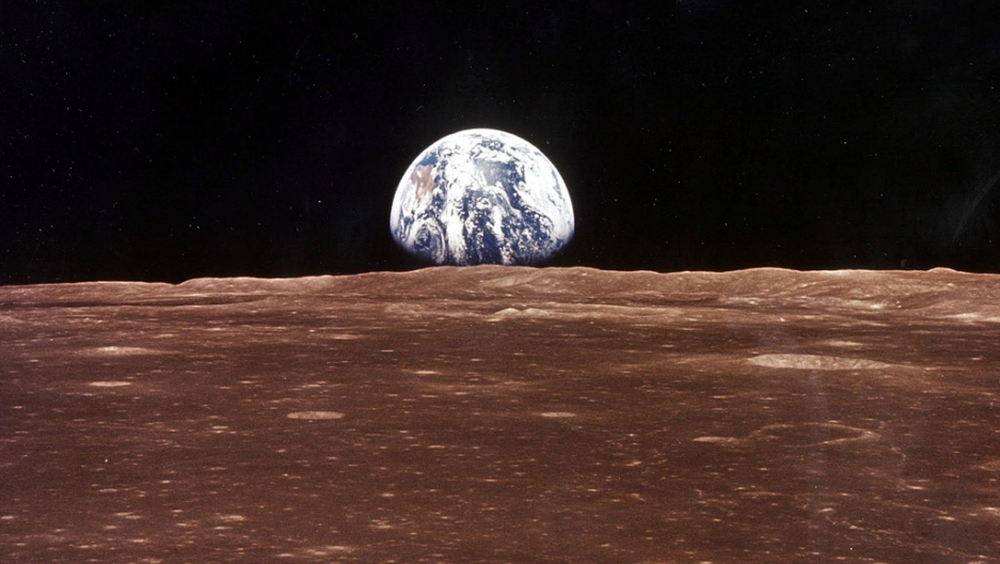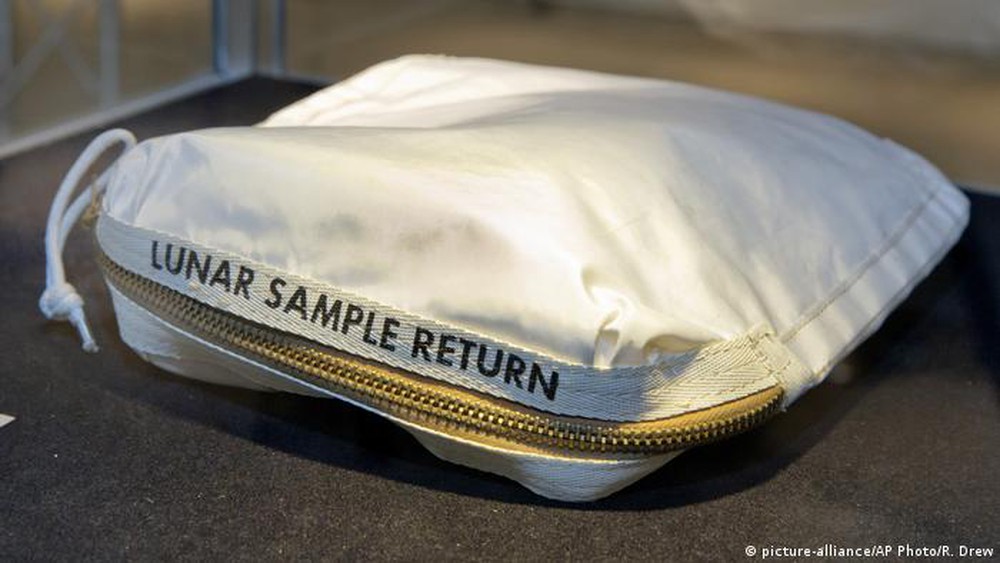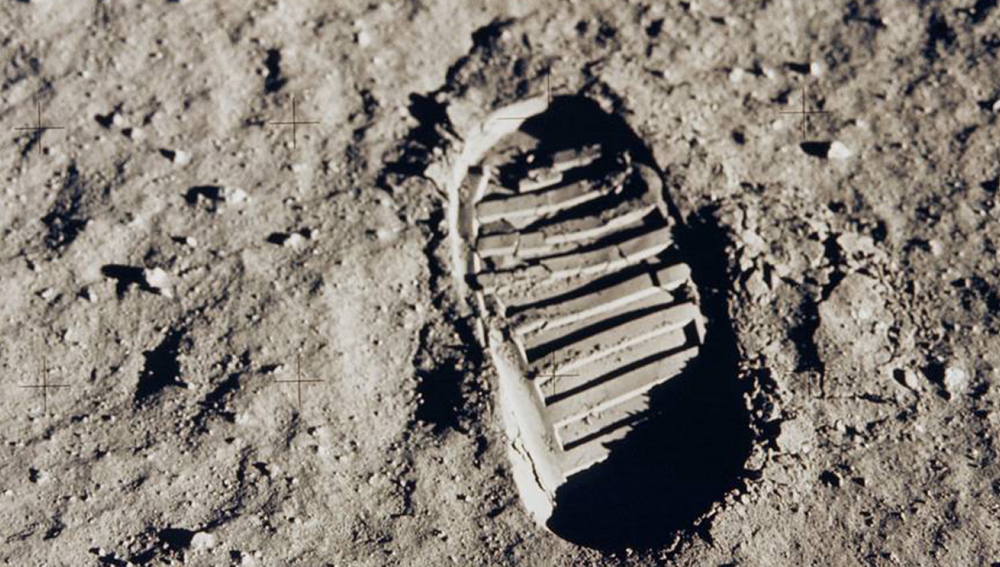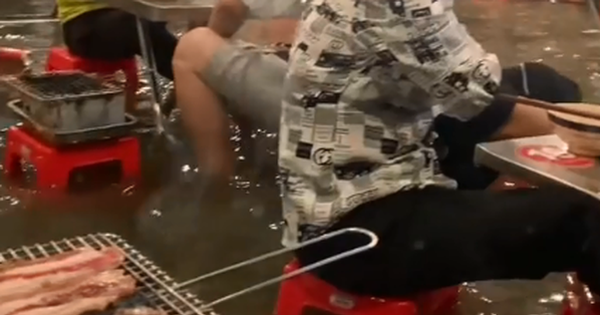A sample of dust Moon collected by Neil Armstrong during the 1969 Apollo 11 mission will be put up for auction at the Bonhams home in New York this April. As part of an auction of rare artifacts related to space history, the special specimen from the Moon is expected to fetch about $1 million. This is also the first time that lunar dust that NASA has verified has been legally sold.
NASA loses monopoly on lunar dust
NASA has long claimed it is the sole legitimate owner of lunar dust. The agency has spent several decades dealing with disputes with people who somehow obtained similar specimens from the Apollo program. NASA usually wins these wars. However, the Moon dust that is about to be sold at the Bonhams home has repeatedly slipped out of the hands of the government and now NASA cannot recover it.
This historic auction serves as a reminder that NASA has not only lost control of its lunar dust, but to some extent, the Moon itself.
While the agency is working to launch the Artemis program, which includes a series of missions to the Moon, other countries also have plans for their own lunar exploration efforts. Collecting more recent samples of the Moon could be important for scientific research, but they won’t be as historically significant as the dust collected on the first moonwalk. .

Earth appears behind the lunar horizon as seen from the Apollo 11 command module, before Neil Armstrong and Edwin Aldrin Jr. left the “Eagle” module, becoming the first people to set foot on the surface of the Moon. Photo: NASA
Since the Apollo missions brought back the first samples, lunar dust has become a rare commodity. Between 1969 and 1972, NASA collected about 2,200 samples of rocks, cores, pebbles, sand, and dust from the Moon, most of which were retained by the agency for study. However, through a series of circumstances from random chance to blatant theft, some individuals have obtained NASA’s Moon dust, and some have even managed to sell it.
NASA asserts that these people illegally possessed agency property, and for years the government launched elaborate, sometimes bizarre, operations to recover lunar samples.
In 2011, an investigation brought officials to a Denny’s store in Riverside, California, where they came across a 74-year-old woman trying to sell a “blot” of Moon rock she believed Neil Armstrong gave it to her husband in the 1970s.
Journey of the Moon dust bag
Although most of it has been recovered, there is one dust sample that is still out of NASA’s reach: that is the amount of lunar dust that is about to be sold at Bonhams auction house.
The story of the agency’s loss of it began when Armstrong first landed on the Moon, collected a few scoops of dust and stored it in a bag. NASA never really had a specific plan for this bag, and long after Armstrong returned to Earth, the bag only cost 15 USD was deposited at the Cosmosphere Space Museum in Kansas.
That transfer was little noticed, except for Museum Director Max Ary, who secretly sold artifacts that NASA lent to the Cosmosphere. Ary was finally arrested and sentenced in 2005, after US police seized hundreds of stolen space artifacts, including Neil Armstrong’s bag of moon dust.

The bag that Neil Armstrong brought back the Moon dust to Earth. Photo: DW
The U.S. Marshals Service eventually sold Ary’s collection in an online auction, and geology enthusiast Nancy Lee Carlson paid $995 for a variety of items, including a dust bag and pillow. head from the Apollo command module and the launch key for the Soviet Soyuz T-14 spacecraft.
Carlson suspects that the Moon dust bag is worth a lot more. To confirm the artifact inside it was real, she sent the bag to NASA for testing in 2015. The US space agency not only determined that the bag was genuine, but also belonged to the government. But Carlson successfully sued NASA to get the bag back – after a judge ruled that she bought it legally. In 2017, Carlson sold dust bags for $1.8 million at Sotheby’s. But the bag was then cleaned.
It turned out that during the test, NASA used small pieces of carbon ice to collect lunar dust from the bag, then attached those tapes to a series of small aluminum disks and decided to “shut up”. They only returned Carlson with the bag in accordance with the court’s order.
Carlson sued NASA again, alleging that the agency not only damaged the bag while examining it, but also removed the lunar dust inside. NASA eventually had to return almost all of the lunar dust it had tested to Carlson. And now, the woman has delivered the full moon dust-covered disks to Bohams auction house, estimating that they could bring in between $800,000 and $1.2 million.

Footprints of Apollo astronauts when landing on the Moon in 1969. Photo: NASA
If someone fails to place a winning bid at a Bonhams auction, they still have some alternatives. He or she might be looking to buy Moon dust collected by the Soviet space program, although it is reported that less than a pound (0.454 kg) of lunar dust and samples are sold worldwide. for hundreds of thousands of dollars.
The Chinese space agency also has a few kilograms of lunar rock and dust that it collected with a rover to land on the Moon in 2020. Of course, these samples aren’t likely to go on sale anytime soon. . Instead, it might be easier to buy a piece of a lunar meteorite, which comes from a lunar rock that fell to Earth at some point in history.
There is always “moon dust” widely sold on the Internet, but it is almost certainly a fake.
Today, a new international race to return to the Moon is underway, not only to admire it, but also to collect rock and dust samples. Several countries, including China and Russia, have launched rovers on the lunar surface, and even more have expressed interest in extracting natural resources from the Moon. This resource includes rare metals that can be used to build spacecraft or electronics, as well as helium-3, a rare isotope used in nuclear fusion.
The US could also participate in this “gold rush” of the Moon. NASA has recruited a number of companies to help them excavate the Moon’s underground. Altogether, by some estimates, this resource could be worth trillions of dollars and make missions to the Moon all the more attractive.
at Blogtuan.info – Source: Soha.vn – Read the original article here


